
Bass riffs don’t get the credit they deserve. Bass parts often sit in the background while guitar licks and vocal hooks hog the limelight, meaning it’s easy to overlook their crucial role in the songs we love. From the feelgood disco grooves of Chic to the hard riffs of Rage Against The Machine, many of our favorite songs are powered by famous bass riffs.
The best bass riffs aren’t just about notes or rhythms; they’re about great tone. The sound of a riff helps convey its emotion and define the atmosphere of a song. In this article, we’ll run down five famous bass riffs that every bassist should know. Then we’ll demonstrate how to recreate their tone using Guitar Rig 7, the amp simulator from Native Instruments. By getting under the hood of some of the greatest bass riffs in history, we’ll learn a little about how to make bass riffs that work – and maybe inspire you to create your own unique bass tone, too.
Jump to these sections:
- What makes a good bass riff?
- How can I make my bass sound better?
- 5 must-know bass riffs and how to recreate their sound
Follow along with Guitar Rig 7 Pro, an inspiration suite filled with sought-after guitar and bass amp simulators, studio effects, and pedals – now 50% off for a limited time.
What makes a good bass riff?
A good bass riff doesn’t need to be flashy. Unlike famous guitar riffs, most bass riffs don’t depend on impressive technique or dextrous playing. Instead, they offer a memorable hook and a powerful groove. The best bass riffs create a strong foundation for the other elements in a song. They make you want to move, and maybe hum along. Crucially, they also sound great: whether it’s a clean and punchy disco tone or an overdriven rock sound, famous bass riffs have a tone that heightens their effect.
How can I make my bass sound better?
Whether you’re playing a real bass guitar or a MIDI bass instrument, you can easily make your bass sound better using a digital amp sim like Guitar Rig 7. This creative VST offers lifelike models of countless beloved amplifiers, effects, and more. Instead of spending thousands on bulky equipment, Guitar Rig 7 lets you shape authentic tone in just a few clicks, or experiment with wild signal chains that are unique to you. It’s also versatile: with Guitar Rig 7, you can be a Motown master one day, and a rock god the next.
Must-know bass riffs and how to recreate their sound
1. Chic (Bernard Edwards) – “Good Times”
Chic co-founder Bernard Edwards is one of the most revered bassists of all time, and his work on “Good Times” might be his crowning achievement. Pretty much everybody knows the song’s bouncing, infectious bass riff – whether from the disco original, or from the countless hip-hop tracks that sampled it.
Edwards often played straight into the mixing desk for a clean, precise sound. His unique tone came partly from his forceful finger-playing style. (If you want to capture this sound, try Scarbee MM-Bass, a bass guitar VST inspired by Edwards’ playing that’s packed with expressive articulations and techniques.) But we can use a few tricks in Guitar Rig 7 to get us close.
First, we shaped the bass tone with an amp. The Bass Pro component models a widely loved bass amp that Edwards was known for using live. Crucially, this amp gives us plenty of EQ control so we can sculpt a clean, polished sound. Using the amp’s parametric EQ, we applied a mild cut to the low mid frequencies (the 180 Hz and 300 Hz bands) as well as a big cut to the tops. We also dialed back the bass frequencies using the EQ knob.
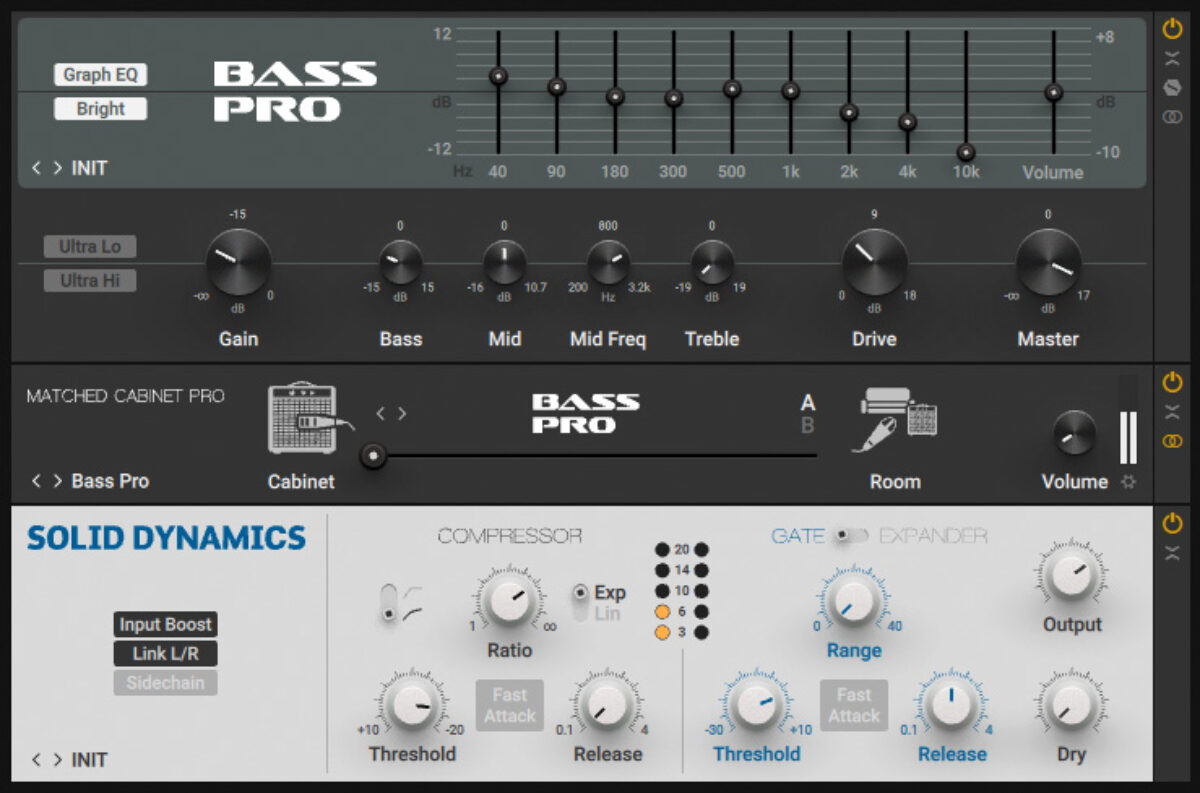
Finally, we added compression for extra polish. With the pristine sound of Chic’s studio recordings in mind, we chose the Solid Dynamics component, which models the compressor found in a highly acclaimed ‘70s mixing desk. We tweaked the compressor threshold to get 3-6 dB of gain reduction.
2. Pixies (Kim Deal) – “Gigantic”
It’s no coincidence that the two most famous songs by Boston band Pixies, “Gigantic” and “Debaser,” start with bass riffs. Kim Deal’s deceptively simple bass work is key to the band’s raw appeal. On “Gigantic,” the deadpan riff immediately transports us into the world of the song. It also showcases her iconic tone: an unadorned, trebly sound that’s packed with personality. Here’s how we achieved it with Guitar Rig 7.
We don’t need a complex signal chain to emulate the tone, but it’s important to select the right amp. We chose Bass Invader, which models the sound of a versatile amplifier associated with the Rock and Indie sound of the late 1980s and 1990s.
We then used the amp’s EQ controls to dial in the right tone. We started by turning on the Lo Cut control to remove unwanted bassy rumble. We then used the EQ knobs to make big cuts to the bass and treble. The Low Mid was turned down about halfway, and the Hi Mid turned up to emphasize this frequency band.
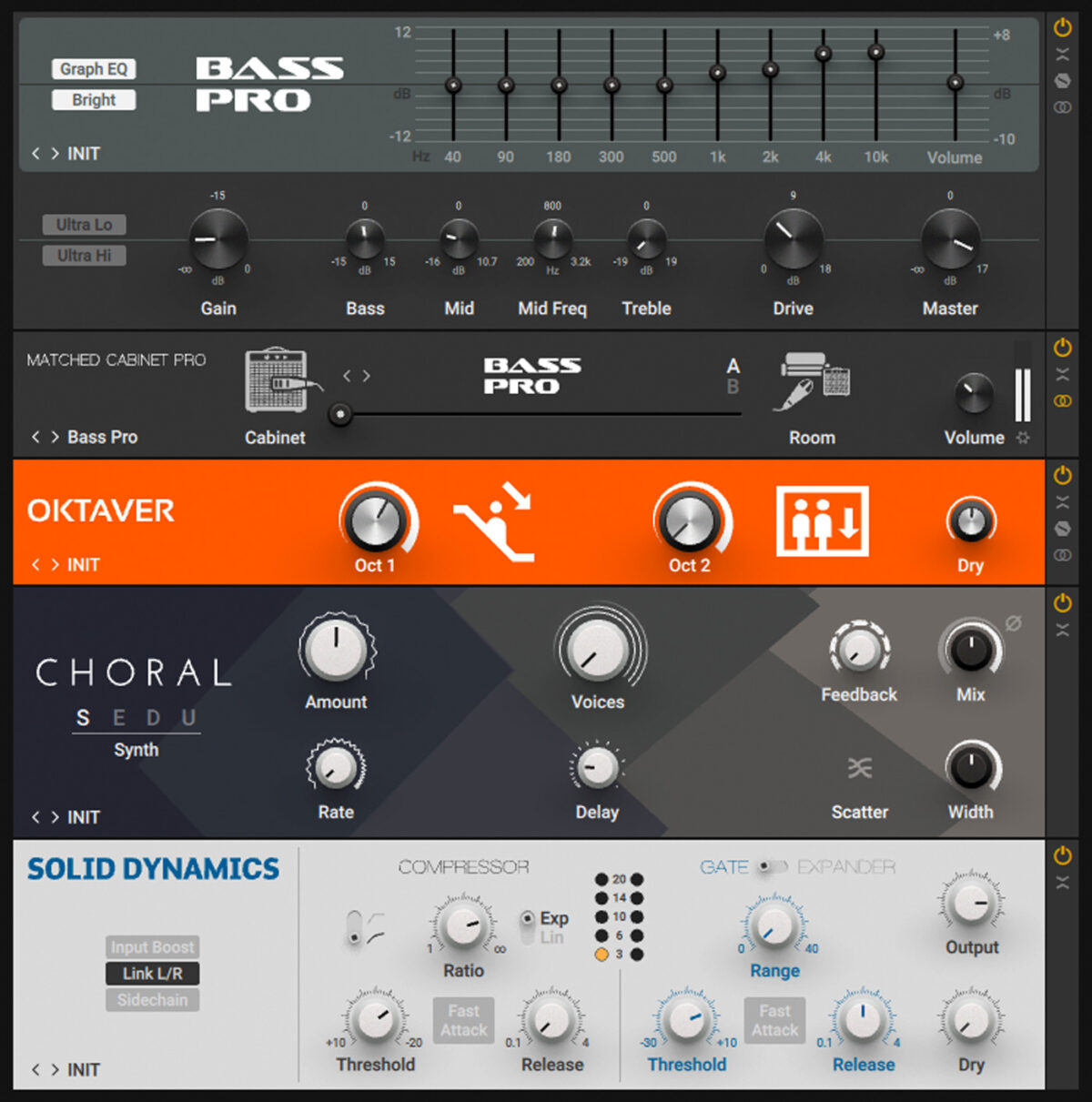
Here’s how it sounds.
3. Peter Gabriel (Tony Levin) – “Sledgehammer”
Tony Levin’s bass sound helped shape popular music for decades. He has played on hundreds of albums, and is best known for his legendary collaborations with Peter Gabriel. On “Sledgehammer,” Levin’s deft playing and unique tone is on full display. His fluid fretless riff is enhanced by an unusual effects chain that helps give the song its synthetic character.
Here’s how we emulated the tone in Guitar Rig 7.
First, we used the EQing possibilities of the Bass Pro amp to get a twangy, trebly tone. We did this by boosting the high frequencies and scooping out some low-mids using a combination of the EQ knobs and the parametric bands.
Next, we applied pitch shifting. This effect is key to the unique sound of “Sledgehammer”: the pitch-shifted signal fills out the bottom-end, adding richness to the twangy clean tone. To achieve it, we dropped in the Oktaver component after the amp. We only need one octave of pitch shift, so we turned down Oct 2 volume to zero, then adjusted the level of Oct 1 until it thickened up the clean sound without overwhelming it.
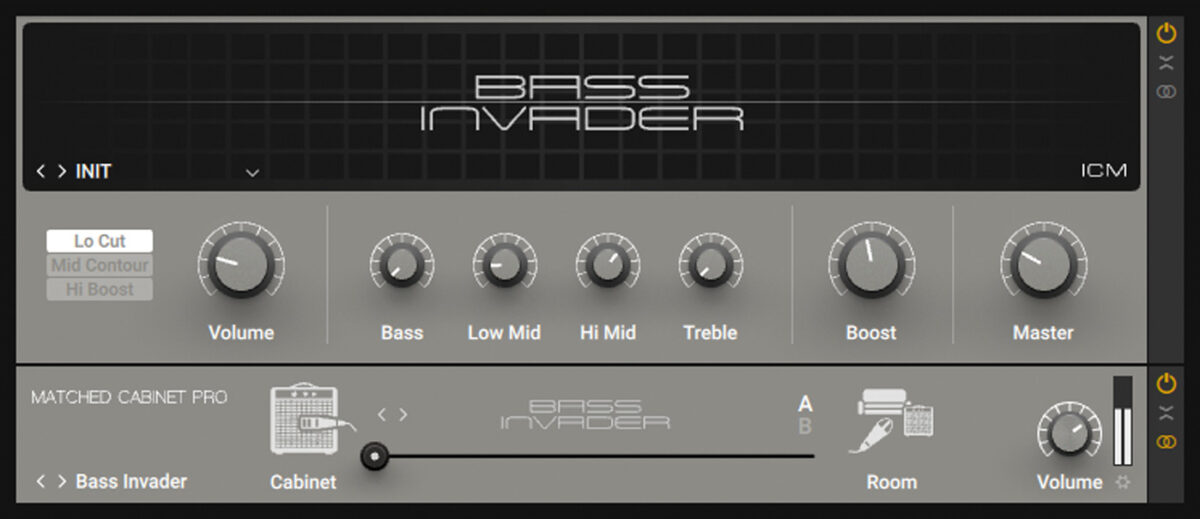
Next, we added some chorus for that sleek ‘80s sound. The Choral component models juicy chorus sounds found in synthesizers and studio rack units from the ‘70s and ‘80s. We placed it after the Oktaver and adjusted the Dry/Wet mix to about 50/50. Finally, compression to smooth out the sound. Solid Dynamics did the job; we simply adjusted the threshold to get 3-6 dB of gain reduction.
4. Rage Against The Machine (Tim Commerford) – “Bombtrack”
Many great bass riffs keep their cool: the bassist holds things down while the guitarist goes wild over the top. But Tim Commerford of Rage Against The Machine shows that bass riffs can be as raw as the most aggro guitar licks. In the chorus to “Bombtrack,” he lays down a blistering riff that powers the song forward.
Commerford plays with a furiously hard slap style that practically pops out of the speakers. He complements this with a rig that balances low-end power with distorted aggression. This signature sound was achieved by running two bass amps in parallel: one with a clean signal, one distorted. We set this up easily in Guitar Rig 7 using the Split Mix component, which creates two parallel signal chains.
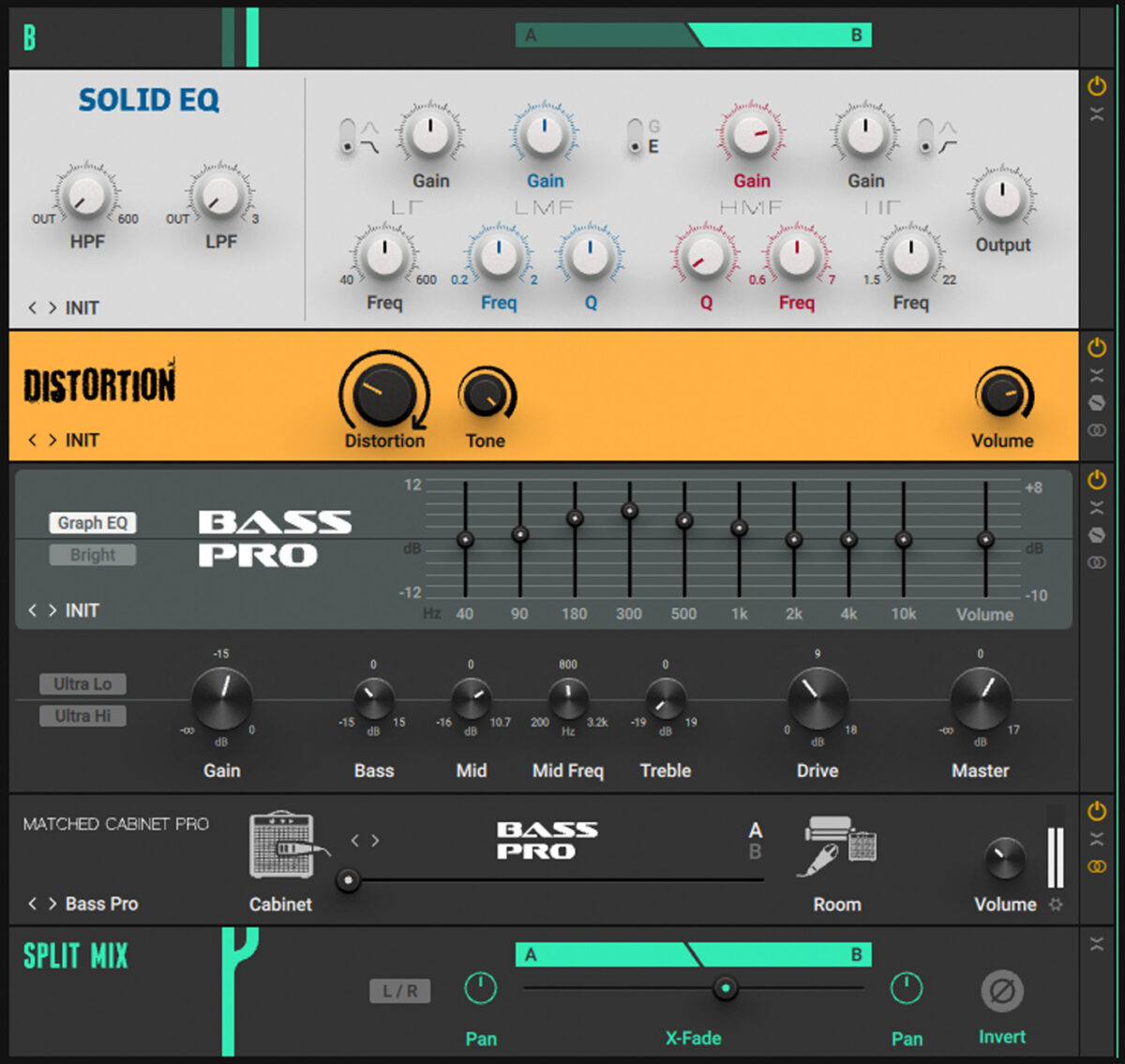
The clean signal was pretty easy to create. We simply added the Bass Pro amp and used the EQ controls to reduce the bass frequencies and boost the mids. For the distorted channel, we used another instance of Bass Pro, but with a distortion effect before the amp. Commerford has used all manner of distortion effects throughout his career. Fortunately, Guitar Rig 7 has over 20 characterful drive and distortion components so it wasn’t hard to find the right one for the task.
In this case the Distortion component did the trick. This models the sound of a well-known distortion pedal that has been used on stages and in studios for decades. This effect on its own wasn’t quite aggressive enough, so we added an EQ before it to further boost the high frequencies. Using the Solid EQ component, we boosted the high-mid (red) band by +12 dB at about 2 kHz to bring out the bass’s attack.
With our clean and distorted signals ready, we used the Crossfade control in the Split Mix component to balance the two. The aim was to get an even blend of power from the clean channel and aggression from the distorted channel. We found about 60% distorted and 40% clean did the trick. Finally, some compression from Solid Dynamics at the end of the chain helped even out the sound.
5. Thundercat – “Them Changes”
Thundercat is bringing bass into the future. His mind-bending fusion style combines virtuosic playing with effects to craft unique bass sounds. On “Them Changes,” he multitracks several bass layers to create a complex riff with an unusual squelching tone.
Here’s how we recreated this tone in Guitar Rig 7.
For the amp, we chose Bass Rage, which models a highly regarded amplifier with a harmonically rich tube sound. But we didn’t do much tweaking here. The song’s distinctive sound comes from a filtering effect that creates a “squelch” with each note. We got this effect with the Auto Filter component, a multimode filter that responds dynamically to the input.
The filtering effect is quite extreme in “Them Changes,” so we started by boosting the resonance to emphasize the filter sound. We then tweaked the sensitivity and range controls until the filter was responding sensitively to the notes played. How the filter behaves depends on how loud the input is, so your settings may differ if your bass is louder or quieter.
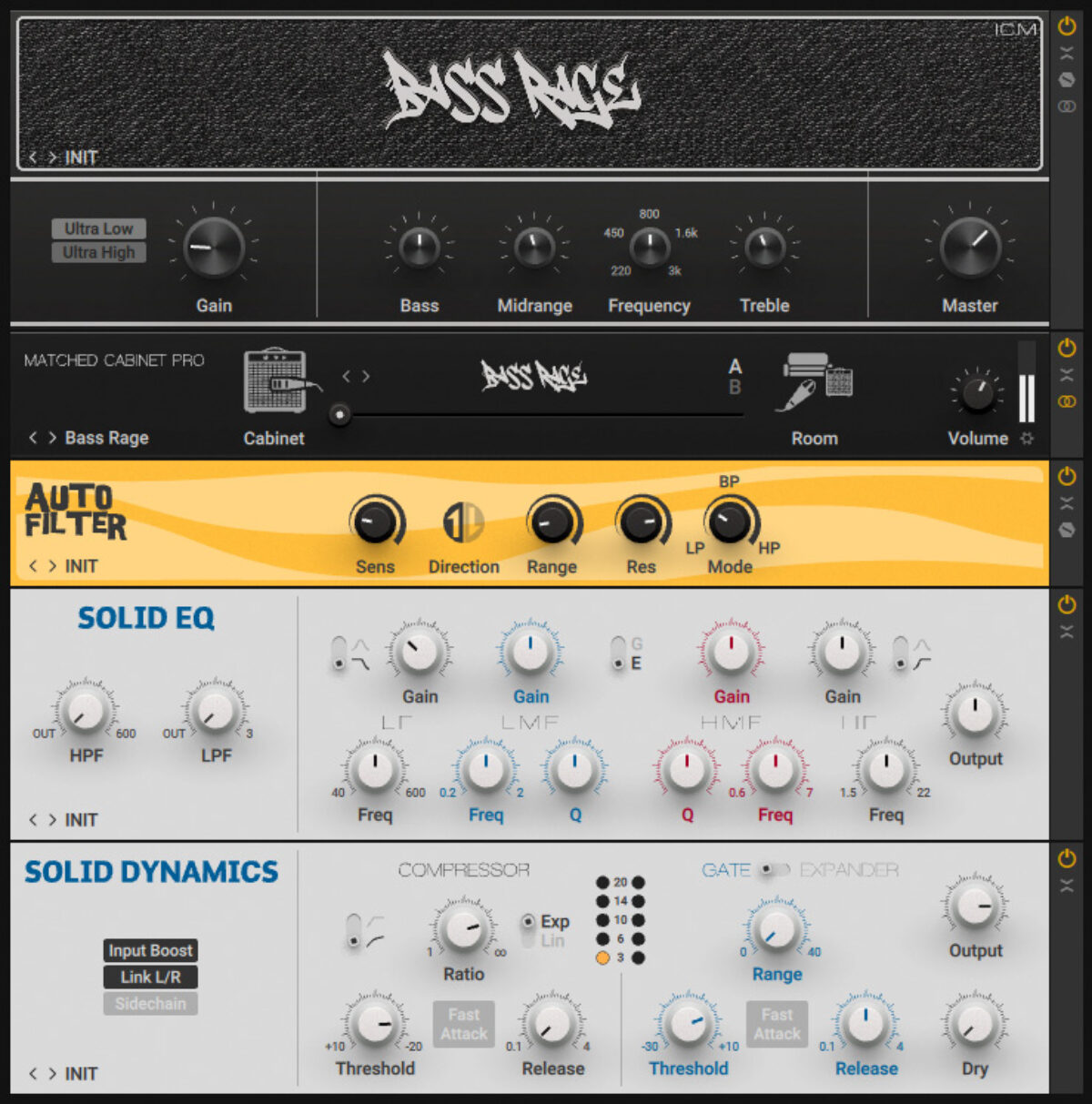
The filtering ended up over-emphasizing the low frequencies in the bass part, so we used EQ to control them. With the Solid EQ component, we turned down the Low Frequency gain (far left) band a little. Finally, a little compression from Solid Dynamics helped even out the sound.
Get inspired with these famous bass sounds
In this article, we’ve run down five famous bass riffs that every bass player should know. We then showed you how to recreate their legendary tone using Guitar Rig 7, the amp simulator from Native Instruments. Now you’ve seen how the greats get their sound, it’s time to start crafting your own unique tone.
Guitar Rig 7 is the only tool you’ll need to make great bass riffs. This bassist’s playground features dozens of lovingly modeled amps, effects, and more, allowing you to shape an authentic bass sound – or experiment with wild new combinations. With this fully featured amp sim, your imagination is the limit.















